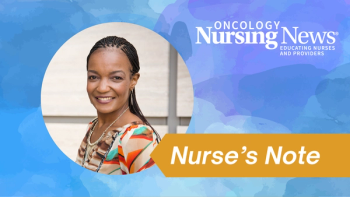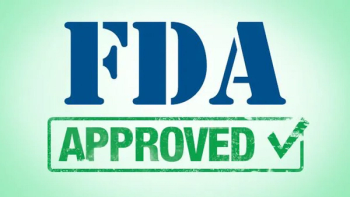
- May 2015
- Volume 9
- Issue 4
More Than Guidelines: Safe Handling in Everyday Practice
Although safe handling guidelines have been published by several organizations, their adoption remains elusive.
Lisa Schulmeister, RN, MN, APRN-BC, OCN®, FAAN
Editor-in-Chief OncLive Nursing
Oncology Nursing Consultant, Adjunct Assistant Professor of Nursing Louisiana State Health Sciences Center in New Orleans, Louisiana
We’ve all heard “back in the day” stories about hazardous drug preparation and handling. Those of us who have been around a while remember the days of preparing chemotherapy in unventilated medication rooms, where we could tell what had previously been mixed in there just by looking at the colored streaks on the wall. Back in those days, we even shared tips on how to remove doxorubicin stains from white uniforms.
Early guidelines had the words “refrain from eating, drinking, smoking, and applying cosmetics while preparing chemotherapy.” We laugh now, but the reason these words were included is that hazardous drug preparation is exactly that—hazardous. We now know that exposure to these drugs can cause acute symptoms such as skin and nasal irritation, and long-term exposure has been linked to infertility and miscarriages, genetic changes, and an increased risk of developing cancer.
Hazardous drugs require safe handling—no one is going to argue about that. Although safe handling guidelines have been published by several organizations, their adoption remains elusive. For instance, some nurses forgo wearing protective gowns while administering chemotherapy. Others misuse personal protective equipment (PPE), and reuse a disposable gown all day long—sometimes all week long. Some would argue that misuse of PPE may be as hazardous as not using PPE at all.
Having administered chemotherapy as long as I have, I understand their actions. There was a time when chemotherapy infusion bags were spiked at the chair or bedside, so there was a risk of hazardous drug exposure when spiking the bag and then priming and connecting the tubing. However, chemotherapy infusion bags now are routinely primed with saline, so the risk of exposure while assembling the infusion system is virtually eliminated.
Safety experts argue that the tubing spike could fall out of the chemotherapy infusion bag as it is being hung or once it’s hanging on the IV pole. Aside from the fact that the RN should be checking the security of the tubing prior to hanging the bag on the pole, if there is concern that the chemotherapy could shower down on us from the IV pole, then the guidelines should include wearing rubber caps and other PPE to protect the tops of our heads. However, how practical is this? What we need now are hazardous drug handling guidelines that are evidence-based, acceptable to users, easy to implement, and cost-effective.
In other words, what is reasonable, as well as effective?
The Oncology Nursing Society (ONS) hosted a stakeholders meeting earlier this year on handling hazardous drugs, with representatives from the American Society of Clinical Oncology (ASCO), the American Society of Health-System Pharmacists, the Association of Community Cancer Centers, the Association of Pediatric Hematology/Oncology Nurses, and the Hematology/Oncology Pharmacy Association (HOPA) in attendance. A joint position statement that outlines strategies to protect healthcare workers was then developed and approved by ONS, ASCO, and HOPA.
The statement, “Ensuring Healthcare Worker Safety When Handling Hazardous Drugs,” notes that healthcare workers preparing hazardous drugs typically work as employees; consequently, safe handling is a shared responsibility of the employee and employer (Box).
The items listed in the position statement are generic statements, and leave many wondering how to implement the recommendations. The stakeholder group also identified areas for further collaboration, and the group plans to provide resources and tools to promote compliance with implementing safe handling precautions. They also plan to develop resources for using PPE and other safety devices, such as closed system transfer devices, and provide free access to a medical surveillance questionnaire template. These resources will provide valuable guidance to healthcare workers handling hazardous drugs.
1. Joint position statement from the Oncology Nursing Society, American Society of Clinical Oncology, and Hematology/Oncology Pharmacy Association. Ensuring Healthcare Worker Safety When Handling Hazardous Drugs. https://www.ons.org/advocacy-policy/positions/practice/hazardous-drugs. Accessed April 17, 2015.
Articles in this issue
over 10 years ago
Reducing Central Line-Associated Bloodstream InfectionsNewsletter
Knowledge is power. Don’t miss the most recent breakthroughs in cancer care.
















































































